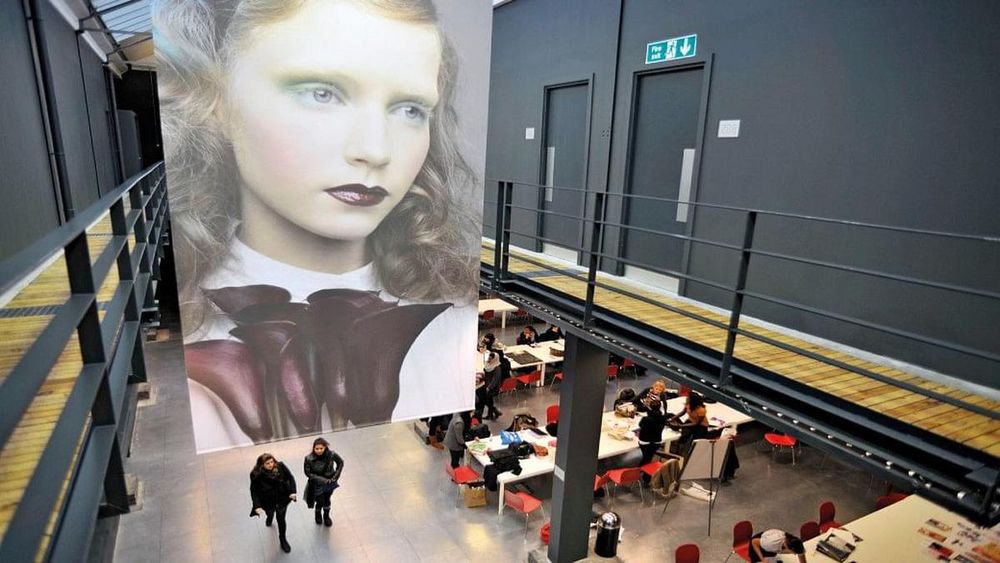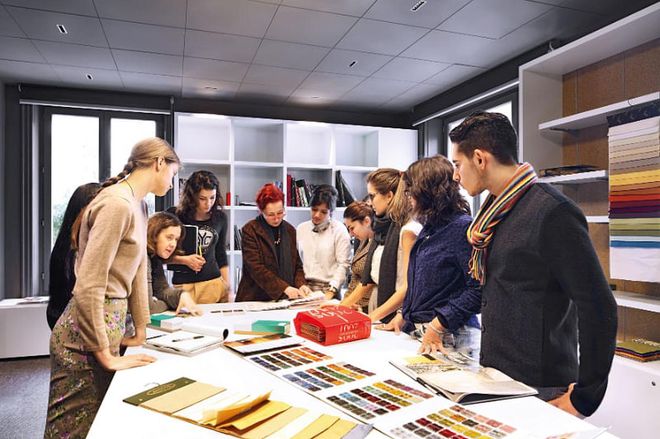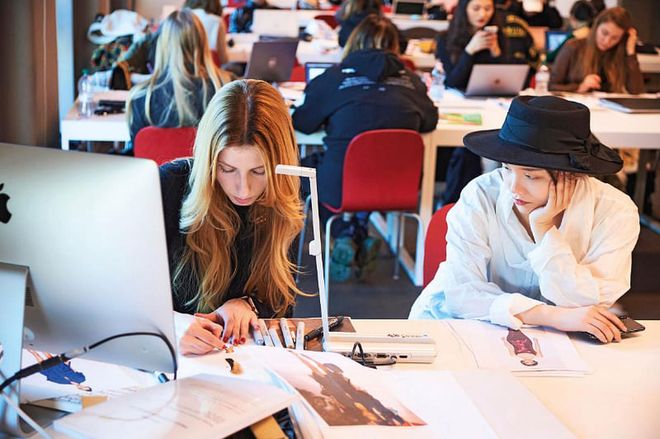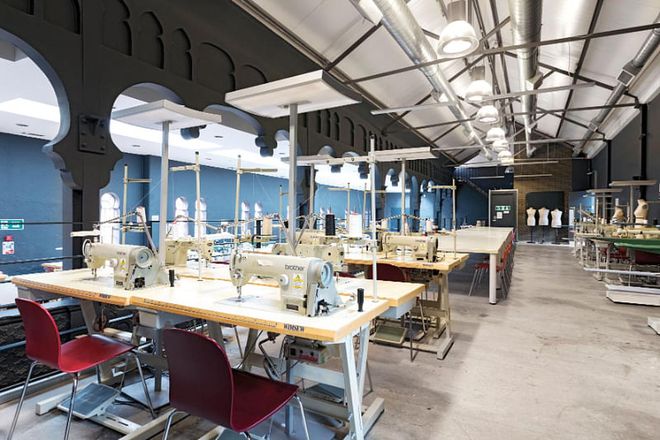Higher Calling: Istituto Marangoni London's Stelios Geros On Supporting The Next Generation Of Fashion Talent
Stelios Geros of Istituto Marangoni London talks about shaping the young minds of fashion and how the school provides them the tools to thrive.

As part of the Harper’s BAZAAR NewGen Fashion Award mission to nurture young design talent and take their journey to the next level, the winner of the Award gets to further his or her education at the Istituto Marangoni, the prestigious fashion, design and art university that dates back to 1935. The winner of the 2022 competition, Serina Lee, will be undertaking her Masters degree in Fashion Design at the London outpost of Istituto Marangoni. To gain a clearer insight into what makes the school one of the best in the world, we had a chat with the Programme Leader of the BA Fashion Design at Istituto Marangoni London (IML), Stelios Geros, on how the course equips its students with the outlook and skills to flourish in a constantly evolving industry.
Related article: Istituto Marangoni Supports Emerging Talent With The I’M Mentors Project

Stelios Geros, the Programme Leader of the BA in Fashion Design at IML. Photo: Istituto Marangoni London
What are the main values you want to instil in your students?
The most important thing is to give our students what they need to make it in the fashion industry, and to help them react to this ever-changing industry. We want our graduates to go in with an understanding that we are connected to any socio-political, environmental situation in the world. Professionalism is another value we want to instil. We also want our students to be an integral part of any team they join and work well with other people. We want them to be responsible designers who will make sustainable decisions. We want them to have a continuing interest in remaining relevant. Another very important thing is for the students to be respectful—that applies to people, topics, cultures. Last but not least, the importance of communication and collaboration is embedded deeply into our curriculum.

Students in the school’s material lab going over fabric swatches. Photo: Istituto Marangoni London
Can you share more about the collaborative components of the curriculum?
It takes different forms, depending on what year the students are in, and what they need in terms of the project they are working on at that time. For example, last year, for our second-year students, [the UK coat maker] Mackintosh came to do a talk about its product and design. That turned into a collaboration opportunity. We let our students experience the brand, then we allowed them the creativity of choosing an artist to collaborate with Mackintosh. It was set up as a competition, and that led to one of the students winning a paid summer internship with Mackintosh. Collaboration also happens between the programmes. We have a lot of interaction between the BA Fashion Styling students and the BA Fashion Design third-years on their graduate collections. As the collections are being realised, they also start discussing their lookbooks. The styling students also provide the art direction, and the end result is part of both students’ portfolios.

Students work on their projects. Photo: Istituto Marangoni London
Can you go into more detail on what is taught in the BA Fashion Design programme?
In the first year, we start with the fundamentals. Our students come from varied backgrounds, so even if they have done a foundation course or have had training in another creative field, we start from the beginning: drawing, pattern-cutting, garment construction, learning about fabrics and digital design. We also teach them how to research, how to identify suitable inspirations, and how to build a narrative for their collections. We teach them the history of art and fashion.
I always say the past informs the future—if you don’t know about the past, you can’t really innovate. They also learn about fashion trends, which is important in staying relevant. And through projects like the Mackintosh one, we teach them about brand DNA and aesthetic codes within design. Because, let’s face it, not all of them will set up their own businesses, and it takes a lot of knowledge to translate your ideas through the lens of a brand. Sustainability is huge—we have that in every project. We ask our students to find sustainable sourcing and processes. And then there are the transferable skills. Time management is really important. If you can’t meet deadlines, you’re not going to be successful. You also need to know how to present the work with confidence, with conviction.

The sewing room at IML. Photo: Istituto Marangoni London
Tell us about learning outside of the context of a classroom. Fashion, as we know, is very much about practical learning in addition to theoretical knowledge.
Specifically for the BA Fashion Design at IML, we have a very important optional year, which we call the sandwich year. In between their second and third years, the students get nine months of work experience with the support and supervision of our tutors. It could be three three-month internships; or six months someplace and three months elsewhere; or a whole academic year in one brand. Students can choose a taster of different positions, or become part of a team. Our Designer of the Year last year—the student who won the Best Collection—did his placement at Vivienne Westwood, and was asked to join the design team full-time after his graduation. We have many cases where the students’ input was so valued by the brands that they were offered jobs once they graduated.
Related article: Taking Flight With BAZAAR NewGen and Istituto Marangoni
Apart from the sandwich year of placement programmes, how else do you familiarise your students with the industry?
Designers and creatives come in almost weekly to interact with our students. It doesn’t just inspire and motivate them, it also allows them to envision themselves in different positions and opens their view on what roles are out there. Recently, we had Melanie Walker come in for a talk. She was at Roland Mouret, then worked with Victoria Beckham in the first nine years of building her brand. It’s important for the students to know about the different positions—design, creative, technical—that eventually led to the knowledge and skill set that allowed her to help build such a big brand. We’ve had Phoebe English, who is very passionate about sustainability. Last year, we had representatives from JW Anderson, as well as Jordan [Bowen] and Luca [Marchetto] from JORDANLUCA be part of a mentorship panel. For anything not covered in our syllabus, such as embroidery and knitwear, we conduct specialised workshops.
Is virtual design and the metaverse something that excites you as an educator?
I get the importance of virtual fashion and I do get excited about the potential of the metaverse. I think it’s about finding that balance between exploring new technologies and keeping alive the beautiful techniques that have been developed through centuries. It’s about finding a way to fuse the two. I’m currently training myself in CLO 3D, which is a new software that I wasn’t taught to use back in 2000 when I was in university, because it didn’t exist.
Related article: Istituto Marangoni London: The Secret To Becoming A Successful Fashion Entrepreneur
Is that something you’re looking to introduce into the curriculum?
CLO 3D, which is a virtual realisation of design, is taught in the second and third years of the BA Fashion Design. Marangoni has already been using the metaverse as a platform. For the launch of the Dubai school, there was a metaverse experience in addition to a physical one—a talent from each school presented a collection and the show was a combination of physical and virtual, where models in physical outfits walked through a screen and the outfits transformed into a CLO 3D design.
How have your various roles in the industry shaped your approach as a Programme Leader at IML?
Throughout my career, I’ve gone back and forth between smaller companies and bigger brands, and I find that I now apply all those skills I’ve learned in my job as Programme Leader. From what I’ve gone through, I know what skill set is necessary for my students to be successful, no matter what their fashion journey is.